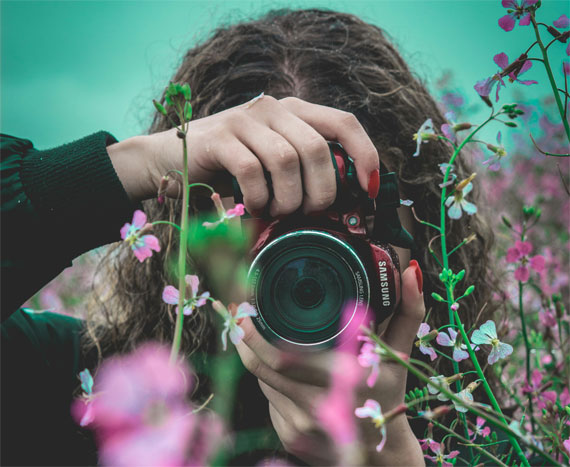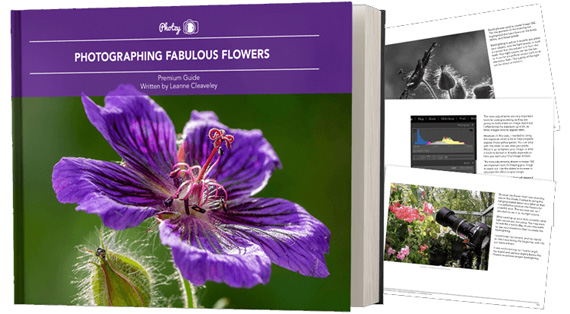Flower photography is an enchanting pursuit, yet it is fraught with potential mistakes that can detract from the beauty of your final image. Among the myriad aspects to master, focus stands out as a critical element. Achieving sharp, well-defined images requires more than just a steady hand; it necessitates an understanding of focus modes, the selection of the right focus point, and sometimes, the fine-tuning capabilities of manual focus. Let’s delve into these aspects and explore how they can enhance your flower photography or, if overlooked, potentially ruin your shots.
Relevant reminder: only a little while left for the Flower Photography Guide at 68% Off

Photo captured by Nicolas Ladino Silva
1. Choosing the Right Focus Mode
Digital cameras typically offer various focus modes, each suited to different scenarios. In flower photography, the two most relevant focus modes are Single-Servo AF (AF-S) and Continuous-Servo AF (AF-C). AF-S, ideal for stationary subjects, allows you to lock focus on a static flower. AF-C, on the other hand, is better suited for moving subjects and might not be as useful for static floral shots unless you’re dealing with elements like swaying flowers in a breeze. Selecting the wrong focus mode can result in missed focus or blurry images, especially if the flower moves after locking focus in AF-S mode.
2. Utilizing the Appropriate Focus Point
The focus point you choose can dramatically affect the impact and clarity of your flower photographs. Many photographers default to using the center focus point, but this can lead to mundane compositions. By moving the focus point to the most striking part of the flower, such as the stamen or a vivid petal edge, you can create more compelling images. Modern cameras allow for easy adjustment of focus points, enabling you to be precise about where you want the viewer’s eye to be drawn.
3. Harnessing Manual Focus for Fine-Tuning
While autofocus is incredibly useful, there are times when manual focus (MF) becomes indispensable, especially in macro flower photography where every millimeter counts. Autofocus might struggle with small or intricate subjects, leading to a focus that’s slightly off. By switching to manual focus, you can fine-tune the point of sharpest detail, ensuring that the most important part of your subject is in crystal clear focus. This is particularly beneficial in situations where the camera’s autofocus is deceived by foreground elements or complex patterns.
4. Avoiding Focus Over-reliance and Overlook
Relying solely on your camera’s autofocus without understanding its limitations can be a critical mistake. Autofocus systems, though advanced, are not foolproof and can be confused by complex scenes or low-contrast subjects like some flowers. Additionally, overlooking the need for manual fine-tuning in challenging focusing conditions can result in a lack of sharpness where it matters most.
5. Depth of Field and Focus Relationship
Understanding the relationship between focus and depth of field (DoF) is crucial. A very shallow DoF can make focusing accurately even more critical, as the margin for error is minimal. Conversely, a deep DoF can forgive slight focusing inaccuracies but might detract from the subject by including too much background detail. The aperture setting you choose directly affects DoF, so it’s essential to select it thoughtfully based on your desired focus effect.
In Conclusion
Focusing effectively in flower photography is a nuanced art that involves more than just pointing and shooting. By selecting the appropriate focus mode, carefully choosing and adjusting your focus points, and knowing when to switch to manual focus for fine-tuning, you can avoid common pitfalls that lead to unsatisfactory images. Remember, focus is not just a technical necessity but an artistic tool, guiding the viewer’s eye and emphasizing the beauty of your floral subject. With practice and attention to these details, your flower photographs can achieve a new level of clarity and impact.
For Further Training on Flower Photography:
Have you ever wondered how amazing flower photographs are created? I wondered as well… And then, I found this amazing, and gifted, flower photographer- who not only knows HOW to create dynamic flower photography- she also knows how to TEACH those tricks and techniques to other photographers through this in-depth eBook. It is currently 68% off for a limited time with all the flowers blooming if you want to check it out.
156 page practical guide packed with Assignments, Key Lessons, and Self-Check Quizzes! (15 assignments, 26 key lessons, & 70 self-check questions!) With this guide, you’re getting a complete system for producing beautiful flower photographs. And, it’s at a fraction of the cost of an in-person workshop. Plus you can re-read the material anytime you want, whenever you need a quick refresh.
Deal ending soon: Photographing Fabulous Flowers at 68% Off
- - - - - - - - - - - - - - - - - - - - - - - - - - - - - - - - - - - - - - - - - - - - - - - - - - - - - - - - - - - - - - - - - - - - - - - - - -
This post Perfecting Focus in Flower Photography appeared on PictureCorrect.
from PictureCorrect https://ift.tt/4NAk8ov
via IFTTT







0 kommenttia:
Lähetä kommentti